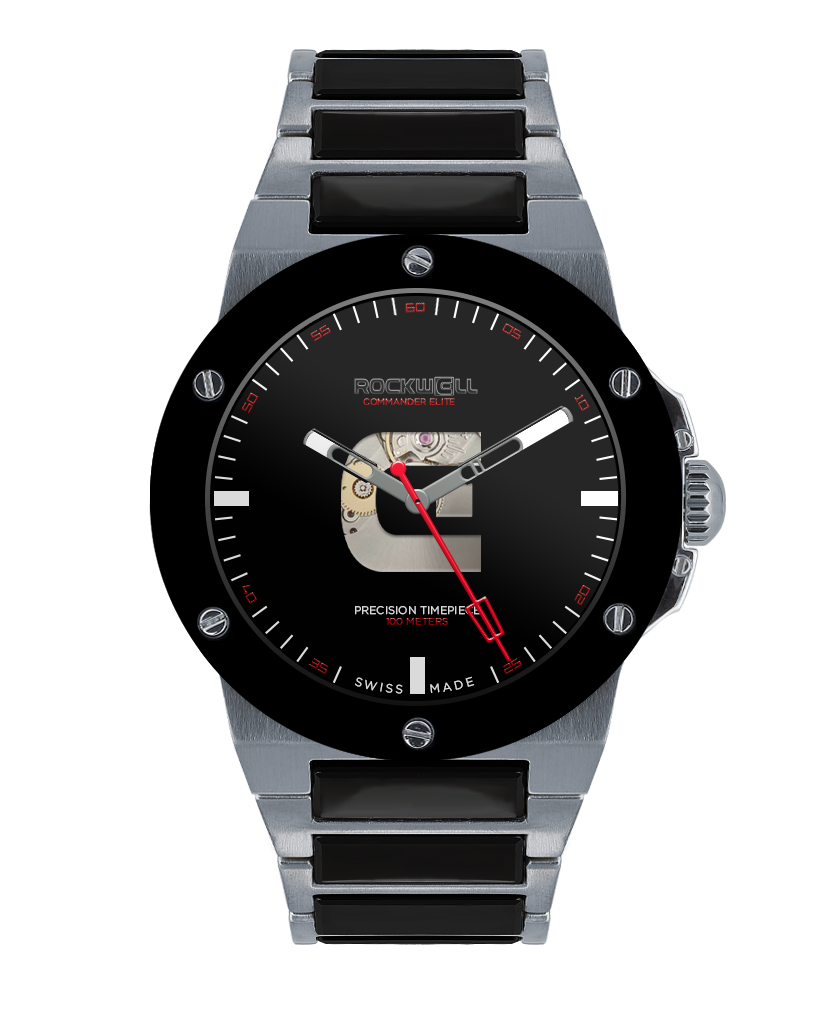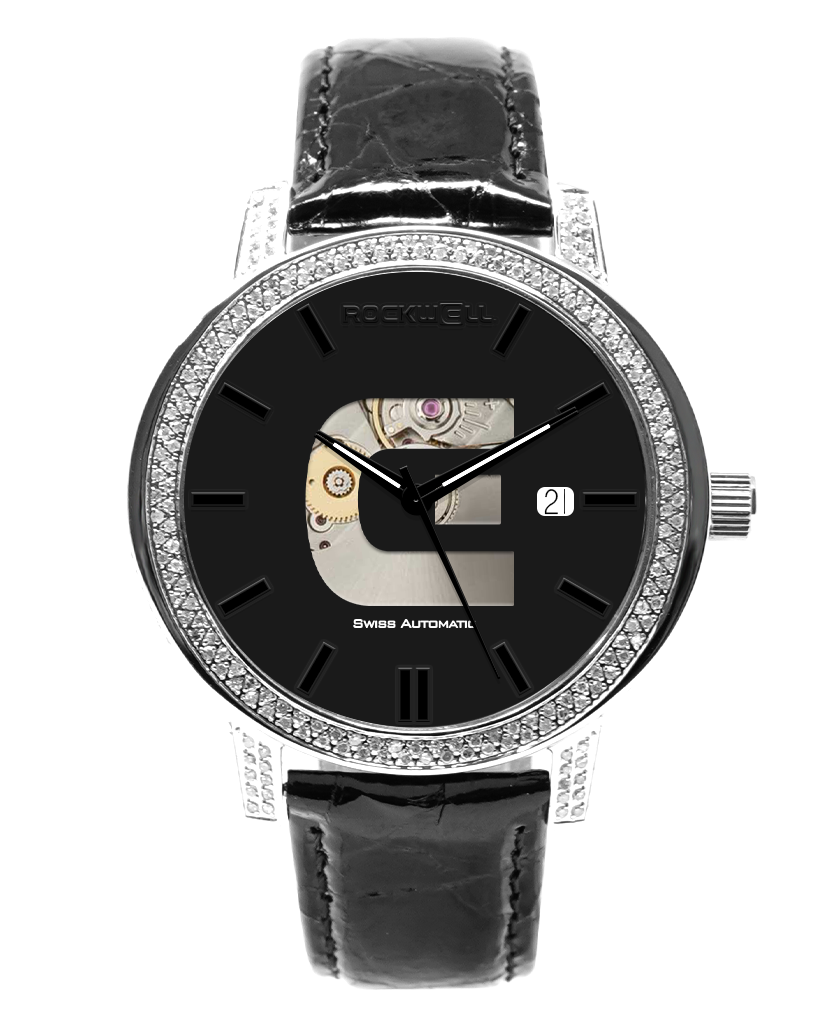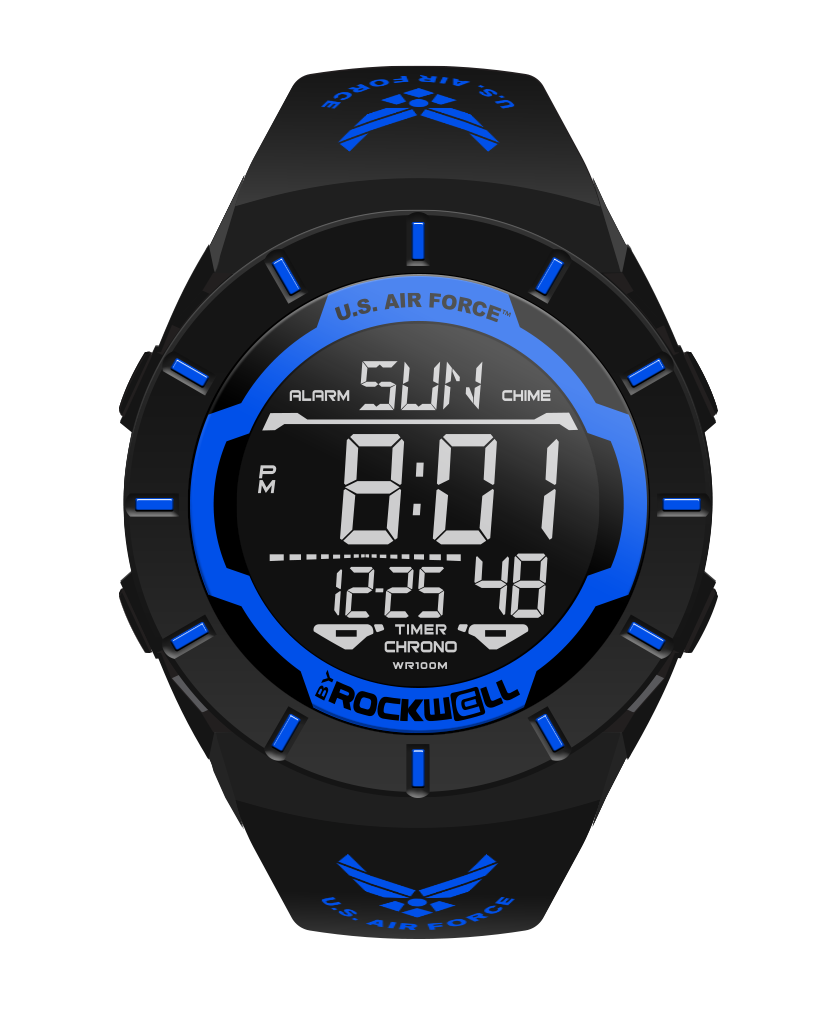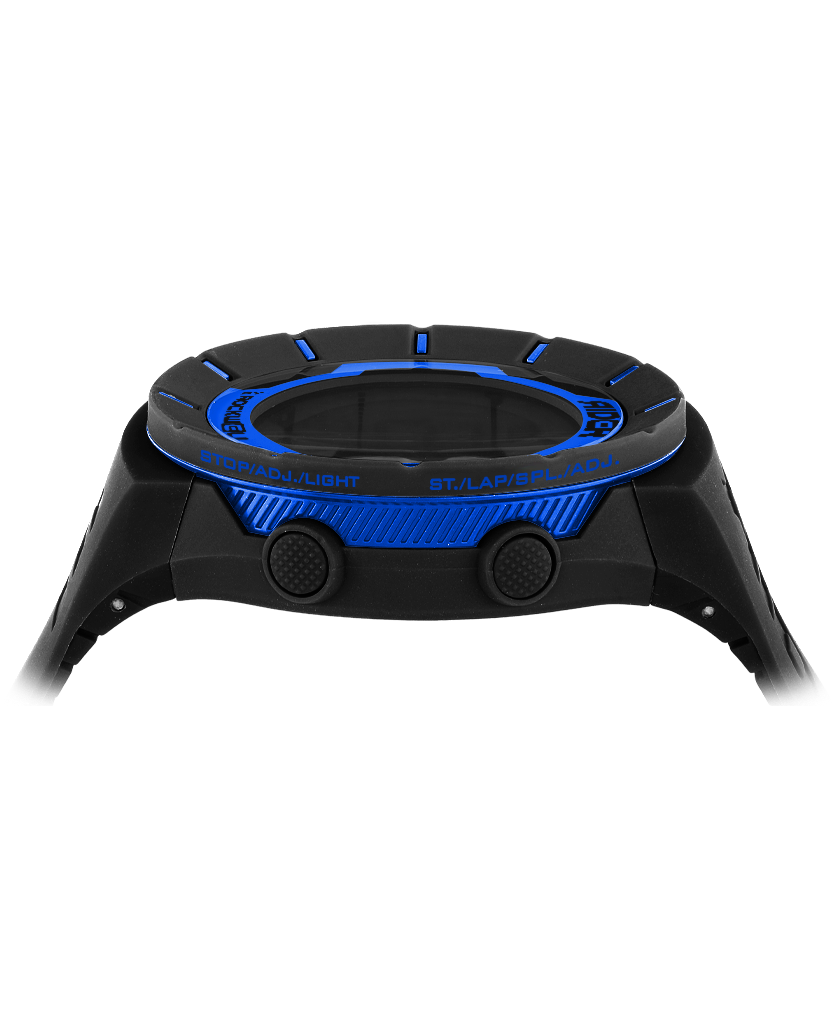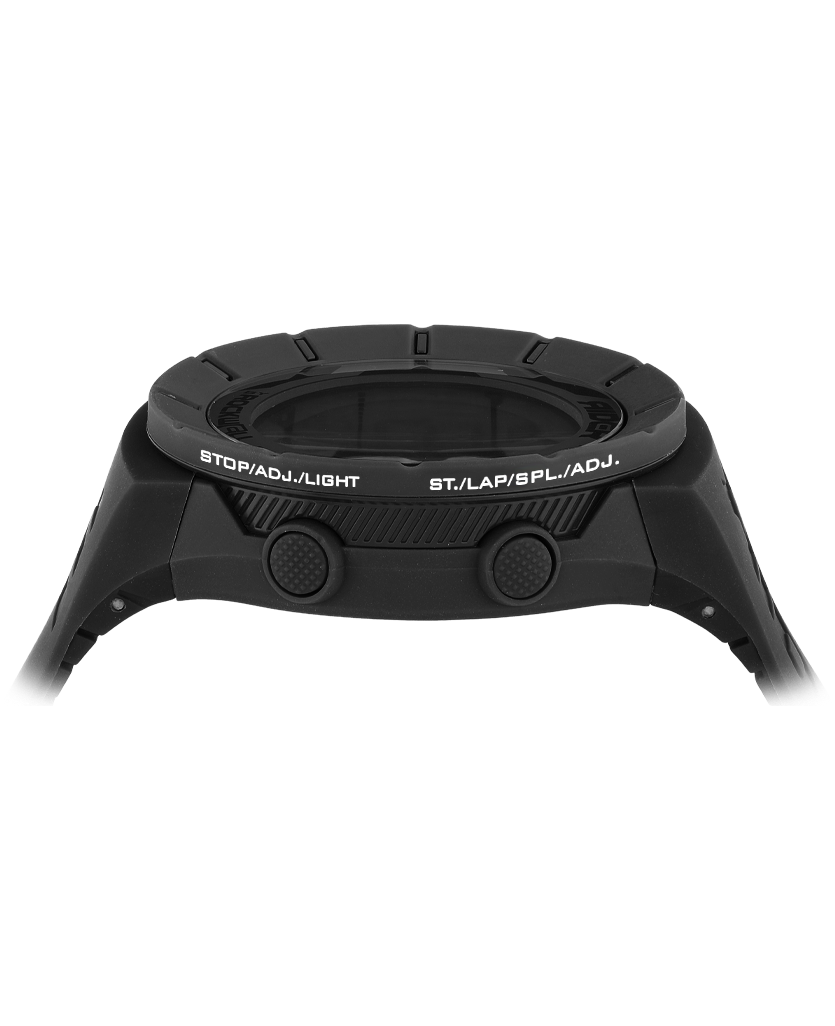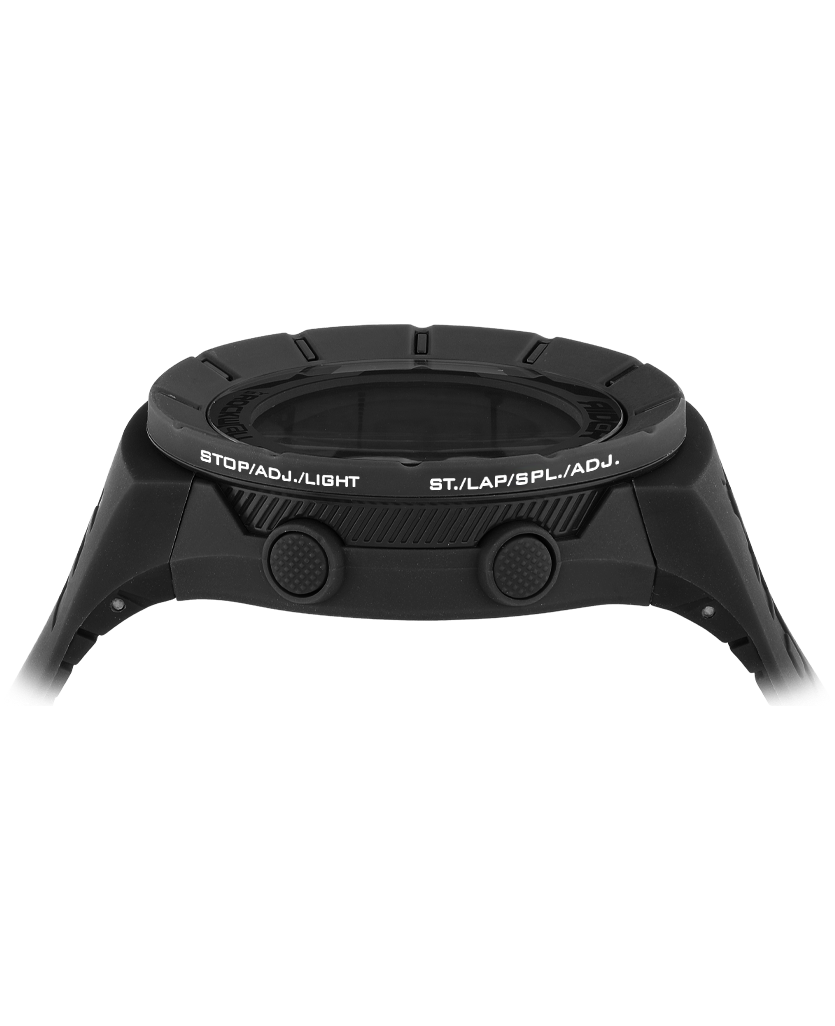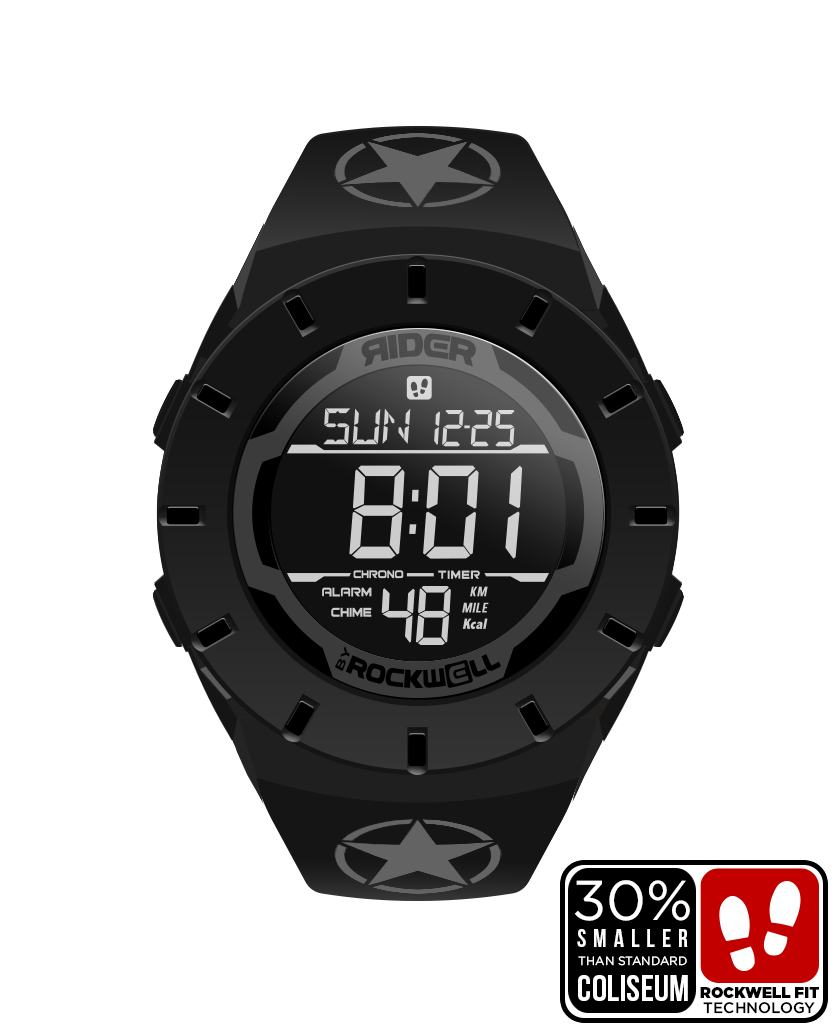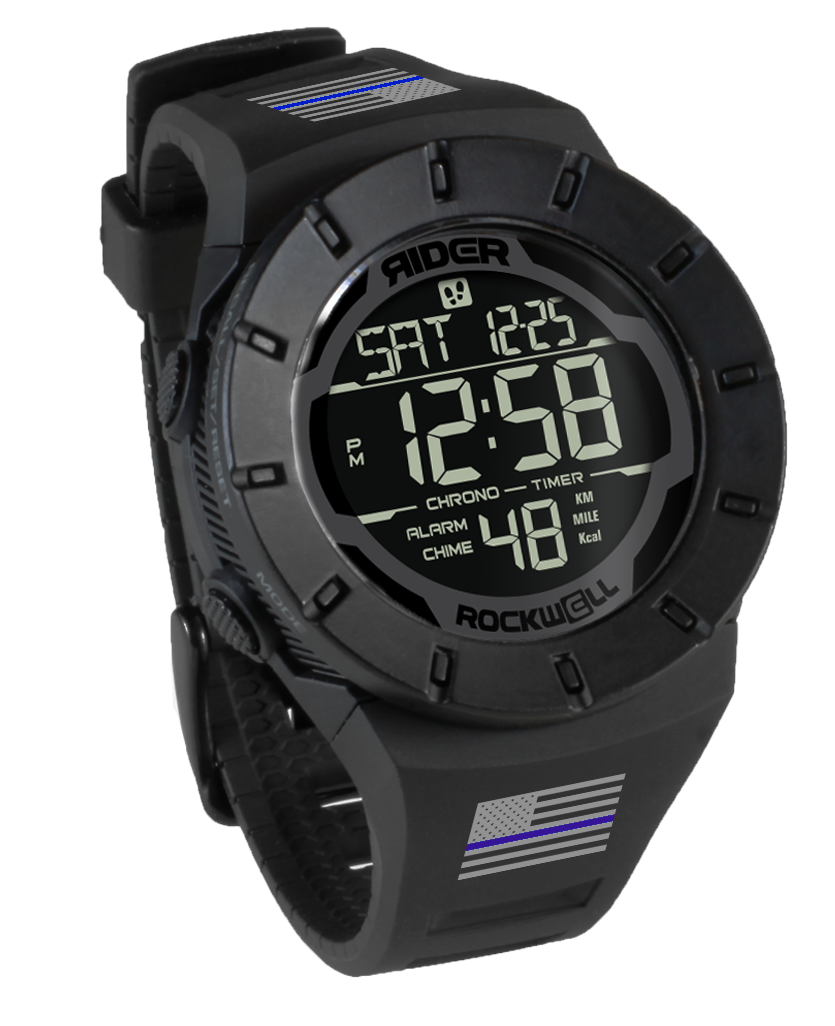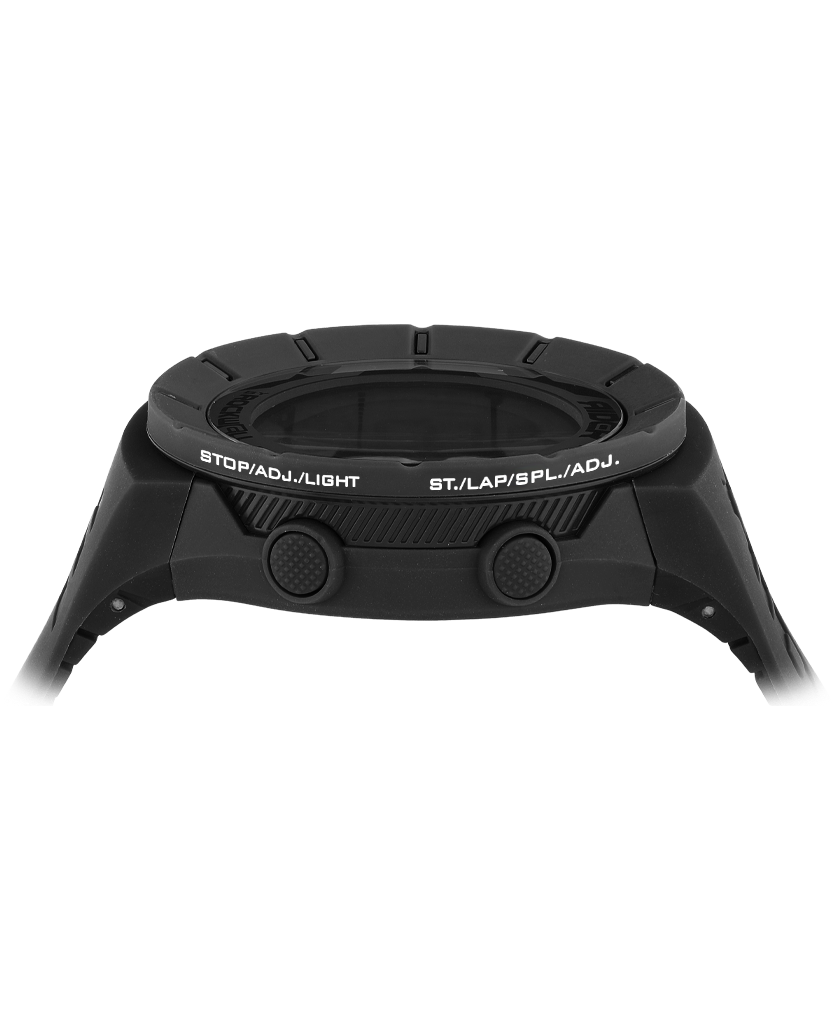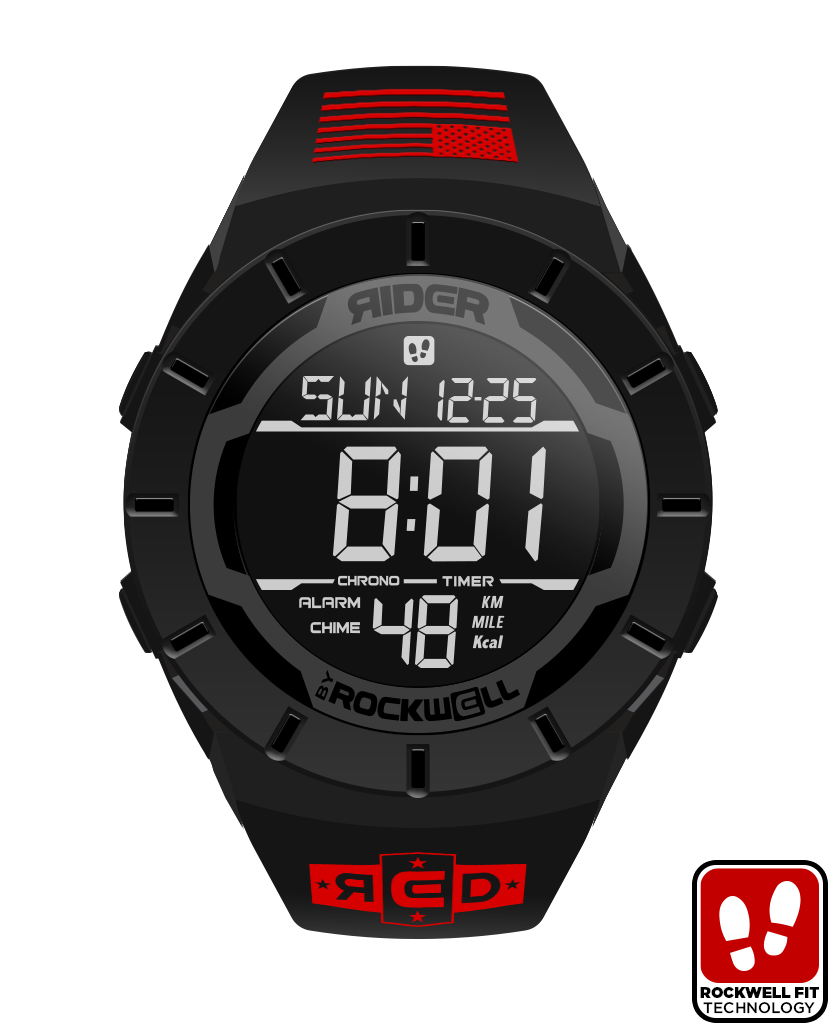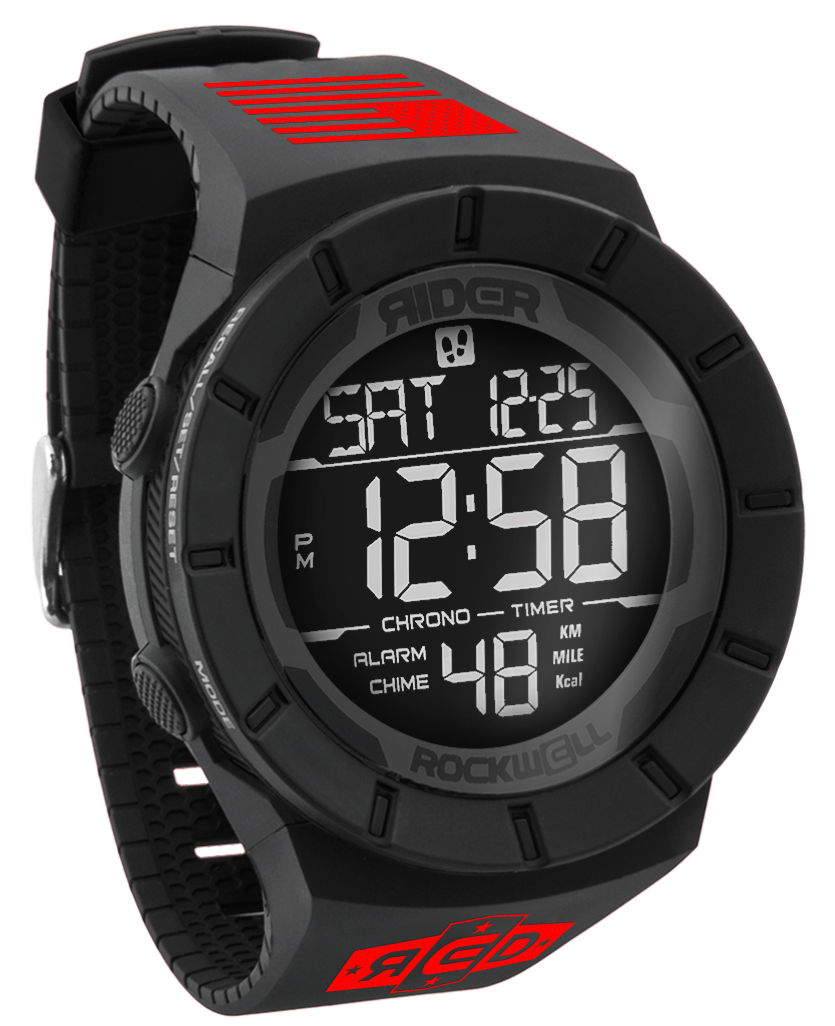What is an Automatic Watch?
An automatic watch, sometimes referred to as a self-winding watch, is a mechanical timepiece that uses the natural movement of the wearer’s wrist as the catalyst to wind the mainspring. Wear it regularly, and you can say goodbye to the hassle of manual winding.
Key Features of an Automatic Watch
Mainspring: This tiny spring is coiled tightly, allowing it to store and release energy. With each rotation of the rotor, the mainspring is wound and filled with the energy needed to keep the gears in motion.
Rotor: The rotor is the stand-out piece that sets automatic watches apart from their battery-run counterparts. Shaped like a half-moon, this small but mighty metal weight connects to the movement and pivots with the motion of the wearer’s wrist. It makes its home inside the watch’s case, and can often be seen in action if your watch is cool enough to feature skeleton windows.
Escapement: How does the energy get from the mainspring to the gears? It escapes through the escapement, of course. This piece controls the mainspring’s release of energy, and consists of an escape wheel and ballet fork to guarantee that regulated precision of the tick-tock motion.
Gear Train: While the escapement controls the release of energy, the gear train transmits it from the mainspring to the escapement. Its job is to further regulate and control the energy’s release, which then serves to drive the hour, minute, and second hands.
Balance Wheel: The balance wheel uses a back and forth oscillating motion to ensure the time is divided into accurate, equal segments. Its partner-in-crime is the hairspring, and the two work together to ensure the watch’s time-telling accuracy.
Crown: Located on the side of the bezel, the watch’s crown can be pulled out and then rotated to manually wind the movement, coil the mainspring, and thus set the hands to the correct time. While automatic watches don’t require regular rewinding if they’re being worn daily, this feature can come in handy for resetting things if it’s been off your wrist for a while.
Jewels: This feature might sound like some ultra-fancy decoration, but the jewels actually serve an important purpose. While they won’t offer any visible bling to the exterior, these tiny synthetic rubies behave as a bearing for each of the watch’s moving parts. This allows the mechanics to run smoothly and without friction.
The History of Automatic Watches
Automatic movement watches have a deep and rich history that began with the conception of the mechanical clock in the 13th century. While the first clocks were rudimentary and lacked precision and accuracy, they were a key step in developing the movements we know and love today.
Developing a more accurate and reliable way of telling time was no easy feat. In fact, it was a good five centuries after mechanical clocks hit the scene that the first reference to a self-winding watch was made. If you’ve ever wondered why the Swiss are so integral to watchmaking, it really all boils down to a Swiss watchmaker by the name of Abraham-Louis Perrelet.
In the late 1770s, Perrelet designed and produced the first recorded self-winding mechanism for pocket watches. His design used an oscillating weight which moved up and down, using the movement of the wearer to wind the watch. This paved the way for Swiss automatic watches.
Around the same time, horologist Abraham-Louis Breguet also became fascinated with the idea of a self-winding mechanism, and produced a similar device that featured a barrel remontoire.
Meanwhile, Belgian clockmaker Hubert Sarton was designing a watch featuring a rotor mechanism. In 1778, he sent a completed watch along with its designs to the French Academy of Sciences.
When Abraham-Louis Breguet learned of Perrelet's designs he devoted himself to improving the precision and accuracy of the revolutionary new mechanics, producing quite a few self-winding watches into the early 1800s.
But despite the success of these designs, many blew off the possibility of such devices, claiming that they were far too complex and pricey to be produced. In fact, it wasn’t until the rise of popularity in wrist watches during the late 1800s that self-winding watches began to surface.
Finally, the roaring ‘20s hit with all their glitz and glamor, and the self-winding watch was given the chance it deserved. One brisk afternoon, a British clockmaker by the name of John Harwood reclined on a park bench, breathing in the fresh air and watching carefree children at play. He began to study the simplicity of the see-saw, and wondered if similar up and down movements could be used to create the energy needed to power a watch. Harwood got to work, designing and redesigning numerous prototypes featuring a center-weight system, until, in 1924, he received the very first patent for a self-winding watch.
Are Automatic Watches Automatically Better?
If you’ve done any amount of research on watch types, you may have noticed that the price tag on automatic watches can be quite a bit steeper than their analog and digital counterparts. So what is it that makes these accessories so luxurious and sought-after?
Here at Rockwell Time, we have a deep appreciation for the delicate craftsmanship meticulously poured into automatic movement watches. When customers choose one of these timepieces, it’s because they want a tool they can count on for life. And while there are a host of reasons automatic movement has made its way to the top of the food chain, we’ve found that there are five key elements that cause people to go auto:
1. Ongoing Operation
If worn regularly, automatic watches can continue to operate without regular winding and rewinding. For this reason, many watch enthusiasts choose a self-winding timepiece as their daily driver. It’s hard to beat the low maintenance and high reliability.
2. You Never Have to Change the Battery (Because There Isn’t One)
While quartz and digital watches rely on batteries to run and smartwatches need to be charged daily, automatic watches don’t require external power sources to run. This means you never have to worry about when the battery’s going to kick the bucket or how much charge you have left. The motion of your wrist is all that is needed to keep the watch running.
3. Handcrafted Mechanics
Automatic watches are the embodiment of the handcrafted mechanics and artistry signature to traditional watchmaking. Watch enthusiasts with an appreciation for classic charm and quality will love the ability an automatic watch affords to view the movement through skeleton windows.
4. Classic Style
So many trends these days come and go. Some, like wide leg pants and fanny-packs, are lucky enough to have weaseled their way back into popular fashion. However, you can rest assured that the sleek and classic look of the automatic watch is one that will never go out of style. This accessory has stood the test of timely trends, and it’s not going anywhere. It has the ability to instantly transform any outfit and adds major style and status points to the wearer.
5. Built to Last a Lifetime
The mechanics of automatic watches are meticulously placed piece-by-piece by the careful hands of expert horologists. The materials used in quality pieces are painstakingly selected to ensure optimal durability, making this accessory one that can, with proper care and maintenance, last for years to come.
Rockwell’s Auto Movement Watch Collection
50mm Automatic
It’s no secret that the folks here at Rockwell Time are proud of our great nation. That’s why we’re especially proud of the 50mm Automatic—one of our custom automatic watches that is designed and crafted right here on U.S. soil. It features our very own American Automatic Movement run with 25 jewels, which we’ve dubbed RT1776.
We took a Rockwell fan favorite, the 50mm, and gave it an automatic twist, making it a statement of craftsmanship and luxury. The quality mechanics can be viewed through two skeleton windows, and are set beneath a sapphire crystal and stainless steel casing.
Admiral Watch
Living up to its name, the Admiral can’t help but command respect. It’s quickly worked its way through the ranks of automatic military watches, becoming a leader of the pack. This prestigious timepiece runs on a Kinectix Automatic Movement, which can be admired through the logo dial window at the center of the face. Boasting a sleek, stainless steel exterior, this beloved member of our line of Swiss automatic watches is an impressive sight to behold.
Alexis Watch
Designed to showcase and complement both the power and beauty of the female spirit, this luxury women’s watch is nothing short of stunning. Its crowning glory is its case, which features plated gold and stainless steel, and is encircled by .72 carats of breathtaking diamonds. Another favorite in our line of Swiss automatic watches, this fashion icon is truly a showstopper.
Commander Elite Automatic
We took another Rockwell favorite and turned it into a piece that rivals the most magnificent automatic sports watches. The Commander Elite Automatic boasts a top-of-the-line Swiss-made Automatic Ronda Movement, featuring twenty-five jewels housed in a 42mm stainless steel case. Once again, our favorite part has to be the skeleton windows, because nothing beats watching such meticulously-crafted mechanics at work.
Merlin and Merlin Elite
It’s true that these two watches feature wizard-like mechanics. But believe it or not, they don’t get their name from a long-bearded, pointy-hat-wearing magician from Camelot. They’re actually named after the Merlin Diamond Mine found in Northern Australia which produces stunning, gem-like diamonds.
These Swiss automatic watches are laden with 2.6 carats of diamonds set in stainless steel casing. The crocodile leather wrist strap makes this luxury watch both exotic and refined, not to mention extremely comfortable. And for timepiece enthusiasts who appreciate quality mechanics, the Merlin Elite Watch boasts a large skeleton window at the center of the face for optimal movement viewing.
How to Find the Automatic Watch That’s Right for You
1. Set a Budget
Automatic watches can range dramatically in price. Consider what you can afford to invest in a quality timepiece and begin looking for pieces that fall into that price range. Keep in mind that steeper price tags are often due to higher quality materials and craftsmanship, so while it may cost more up front, it can be a better investment in the long run. Whatever your price range, there are excellent options within each tier.
2. Know Your Purpose
Why are you shopping for a watch? While this question may seem like a no-brainer, it’s important to really assess your purpose in looking for a new timepiece. Your search for an accessory that can go with you from the office to the gym may lead you to look at automatic sports watches. Or, if you’re in the line of duty, automatic military watches may be worth looking into. Consider your primary goals in purchasing a new watch, whether you’re just looking for a classy way to tell the time, or if you need additional features to fit your lifestyle.
3. Consider the Size
A watch’s size can make a huge difference in both look and comfort. While a larger watch definitely makes a bold statement, it can sometimes take up too much space on those with smaller wrists, and might look a bit out of place.
At the same time, a slightly smaller watch face will help achieve a sleek classic look, but something too small might look odd against those with larger wrists. If in doubt, go to any jeweler, watch shop, or even department store, and try on watches of different shapes and sizes to see what look fits you best.
4. Assess Your Style
While automatic watches are typically known for their shiny metal casing and classic look, they can still come in quite a diverse range of styles. From sleek, automatic sports watches to more rugged automatic military watches, there’s a style for everyone. Consider the type of attire you’ll wear most often with your new timepiece. What colors take up most of your wardrobe? Does your style embrace minimalism, modern and bold, or timeless vintage looks? Your watch should complement your unique style and tastes.
5. Determine Your Preferred Materials
Automatic watches can feature a variety of different materials, including gold, stainless steel, ceramic, and titanium. Each material offers its own unique strength to the watch. For example, gold and titanium are perfect when you’re looking for a luxury timepiece, ceramic protects against scratches, and stainless steel is especially versatile and durable.
The Rockwell Promise
Our line of custom automatic watches features thoughtfully sourced materials paired with carefully crafted mechanics to create a masterpiece that will last for years to come. Because our products have been through rigorous testing, we’re confident in their ability to withstand whatever life dishes out. That’s why each of our products comes with a two-year limited warranty. If your watch experiences any manufacturer defects within the first two years, we’ll replace it for free.
But not only that—if you ever decide you’d like to replace or upgrade your product in the future, we’ll cover 70% of the total cost, which means you walk away with a new product for only 30% of the cost.
Hero Mission









